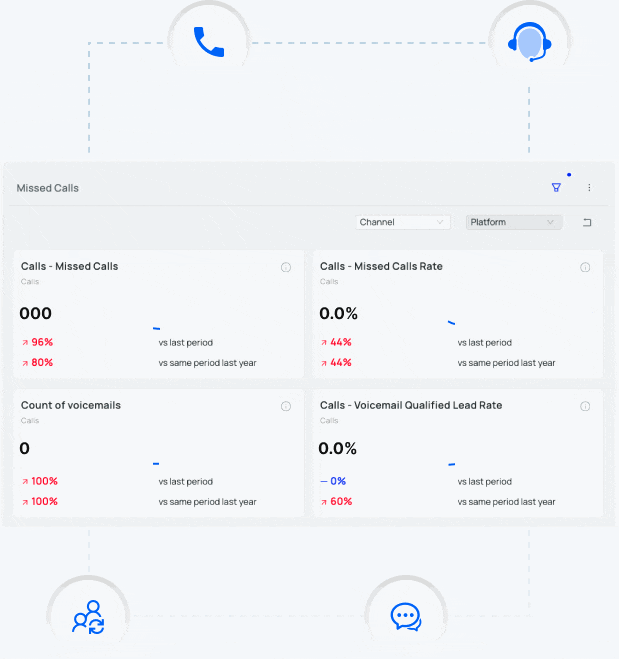
Editor’s Note: Blue Corona does not offer Google review removal assistance as a stand-alone service. We love you and are flattered you love us back, but please don’t call and ask for assistance removing a Google review unless you are already a client with a qualifying package. This article will show you how to do it on your own, or at least help you speed along the process. Enjoy!
So you got a bad Google review (or Facebook, or Yelp, or whatever else). Now what?
First step: DON’T PANIC. Stay absolutely still. Don’t even blink. Don’t…move…a muscle…
Wait—that’s in case of a T-Rex attack, my bad. But the same principle applies. Don’t panic, or try to run away, or fight back. You will get eaten.
It’s a business owner’s nightmare—you put your time, blood and sweat into the company you built from scratch, and one day, POOF! Your hard-earned reputation is tarnished by one grumpy customer with a chip on their shoulder. Not only that, but positive reviews are part of Google’s search algorithm, and it pulls not just Google reviews, but Facebook, Yelp, and other review platforms. That means one disgruntled person—depending on how may reviews you have—can tank your rankings.
BUT WAIT.
There are ways to minimize the damage to your company’s credibility and your website’s SEO, and help ensure customer satisfaction. Whenever any of my clients get a negative review, I always recommend they take these 5 simple steps:
- Don’t panic
- Evaluate the situation
- Respond quickly
- If the review is fake, flag it for removal (If you already know you want to remove a fake Google review, skip ahead to this section. If you want to remove a fake Facebook review, watch a video on how to do it here.)
- Rectify the situation
- Stay on top of it
Never—and I repeat, never—has this process failed me. Below you’ll find quick instructions to take you through each step. Breeze through these babies and never pay for a customer’s bad day again!
1. So You Got a Negative Review. Don’t Panic (or lash out)

A bad or fraudulent Google or Yelp review may make you want to give that person a piece of your mind or grab the nearest sharp object and take a short drive. It’s extremely important that you don’t do either of those things. A bad review isn’t the end of the world—every company has gotten at least one.
Some research has even indicated that bad reviews increase sales, and there’s the time-tested belief that no publicity is bad publicity. So take a deep breath, calm down, and proceed to step two.
2. Evaluate the Situation
The first problem you need to solve is if the review is real. Fraudulent reviews are sometimes left by competitors or even randos you’ve never met. Here’s an example of a fraudulent review a client of mine recently got:

After receiving a bad review, check your records to see if that person really is, in fact, a customer. It turned out this guy was not.
If they are a previous customer, look at what they bought. Look at the time frame of service. Listen to the customer service calls. The more you know about the situation, the better equipped you are to handle it, and prevent it from happening in the future.
3. Respond to Negative or Fake Reviews Quickly

Even if you know the bad review was fake, you need to respond. Here’s why:
Remember, you’re not only pacifying the reviewer, you’re showing prospects how you respond to customer dissatisfaction.
Regardless of the type of negative review you got, respond quickly. Prompt action shows prospects that you’re committed to customer service. The majority of people who read your reviews are people interested in what you’ve got to sell. You not only need to make the complaining customer happy, but assure future customers that the same issue won’t happen to them.
If someone left a fraudulent review—i.e. they’ve never been to your restaurant, used your product, or used your services:
- Address the complaint and apologize for the dissatisfaction
- State you can’t seem to find them in your records as having been a previous customer
- Offer to fix their situation and give them contact information
- Flag or report the review as fraudulent
*Even if you flagged the review, prospects may still see it, or it may not be removed—this is why you ALWAYS respond.
If someone wasn’t satisfied with your service/product:
- Address their complaint, and own up to it, even if it’s only half-true or 1 percent true.
- Don’t make excuses—excuses are like assholes: we all have one and they all stink.
- If there is a legitimate reason why the service/product they received was perceived as sub-par, be honest about it, and assure it won’t happen in the future.
- Offer to fix the problem
4. If It’s a Fake Google Review You Want to Remove, Flag or Dispute it
Google allows you to flag reviews that are fake so they can remove them. Here’s how:
- Open Google Maps and search for your business.
- Click to see all your reviews, and find the one you want to flag

- Click on the three vertical dots in the upper-right corner of the review, then click “Flag as inappropriate.”


It doesn’t stop there, either. You have two more options to escalate the issue:
- Call Google and follow up on your flagged review status. Go to your Google My Business home page. At the bottom of the menu on the left-hand side there should be an option for support. Click it.

- Get legal. If the review can be counted as slander and false, you DO have an option to fill out a Google form for a legal removal request. The requirements for these are pretty high, so grab your nearest legal professional before you go this route.
5. Rectify the Situation—Even If It’s Hard Work
When I tell a business owner they need to change the way they do things, it’s usually met with grinding teeth and a panicked look. I get it. Changing ANYTHING about the way you do business can be stressful—but in this instance, it’s worth it. If you keep getting negative reviews, or have gotten more than a couple, it’s not them—it’s you. Yes, there are cases when an angry review isn’t really about you or the company at all—maybe the customer just had a bad day.
But those times that there was a hiccup in service or a failing product, you need to make a solid effort to fix it. Whether that means better customer service representative training, firing an employee, rewording offers on your website—if you aren’t satisfying your customers, you have bigger problems.
6. Stay on Top of Your Negative Review
Was that fraudulent one ever flagged? Was it removed? Did you redo that customer’s service? Did you refund them?
Staying on top of what happens can actually turn your bad review into a good review. For example, if a customer was unhappy with a service and you came right back and fixed it, that customer may change their review from negative to positive with a little nudging. We’ve seen that happen NUMEROUS times. Most of the time, people leaving a bad review just want their sh** fixed, and want you to be nice about it. It’s not uncommon for people to change a 1-star review to a 4-star after the owner shows a little common decency.

If the review is on a platform that doesn’t allow for changes, they might leave you another one.
Avoid a Bad Review Google, Yelp, Facebook, and Other Directories
Negative reviews are usually drowned out by positive ones, so make an effort to get as many reviews as you can. However—the best response to a negative review is to not get one. Tighten up your customer service. Spend a little extra on training for your employees.
If responding to negative reviews wasn’t in your business plan, give me a call at Blue Corona. Not only do we offer online marketing services, we also offer amazing customer service representative training, and we will craft custom responses to every negative review your company gets.


















